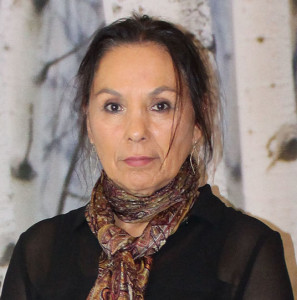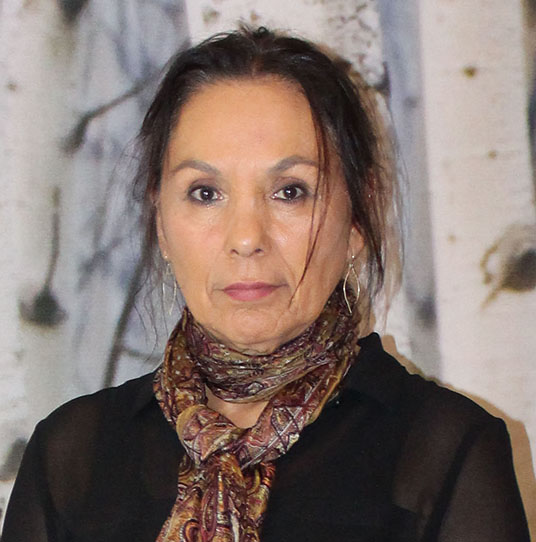Karen Hill, Director of Indigenous Services at OACAS, discusses the journey so far and what lies ahead.

Karen Hill, Director of Indigenous Services, OACAS
Why is reconciliation a priority for child welfare?
For several years now, in recognition of the legacy of residential schools and the Sixties Scoop, the child welfare sector has been actively building relationships with indigenous communities and restoring the responsibility of providing child welfare services back to indigenous communities.
The release of the Truth and Reconciliation Commission’s (TRC) report has made the child welfare sector redouble its efforts. The final report includes five recommendations that specifically call out child welfare and relate to principles of connection, responsibility, involvement of the community in the lives of their children, and acknowledging cultural differences, in that one size doesn’t fit all in terms of engaging with families. Our previous efforts combined with the release of the TRC report have led us to making reconciliation a priority for the child welfare sector in 2016.
What role is OACAS playing in moving child welfare towards reconciliation?
OACAS is actively moving the sector toward acknowledging the past and its impacts on communities. A few years ago, OACAS began developing the Reconciliation Framework. It’s a series of activities that will sensitize and familiarize child welfare staff with things they could and should be doing. Those five areas are welcoming indigenous culture; creating relationships with First Nations, Métis, and Inuit communities; supporting restoration of jurisdiction; reconciliation; and public education.
OACAS is actively supporting the restoration of jurisdiction, meaning that indigenous communities are gradually assuming responsibility for providing the full range of child welfare services. We are doing this work in partnership with the Association of Native Child and Family Services Agencies of Ontario (ANFCSAO) and the support of the OACAS board.
How can child welfare demonstrate that meaningful change is being made?
OACAS has developed an assessment tool that accompanies the Reconciliation Framework. It consists of detailed questions that give us a snapshot of where agencies sit along the continuum of reconciliation and how strong their relationships are with indigenous communities. The assessment tool looks at agencies’ partnerships with indigenous communities and the nature of the services delivered to those families. It’s a quantifiable way of showing how the child welfare sector is progressing and will demonstrate to indigenous communities that we’ve come far and that we’re taking reconciliation seriously.
There has been some discussion that child welfare will apologize for its role in the Sixties Scoop and the apprehension and abuse of indigenous children. What effect would an apology have?
An apology can have a big impact. It’s an important first step, if you will. If you and your best friend or sister don’t talk for five or six months, and if your infraction against her has been serious, then you can’t pretend it never happened. You need to apologize.
People working in child welfare really believed they were doing the right thing. The apology is a chance for indigenous people to say to those of us in child welfare, “I feel bad that you made a judgement about me. You disempowered me and disrespected me and took control away. Your judgement was based on an erroneous assumption.” If we don’t apologize as a sector, we’re in danger of perpetuating the past.
What form will an apology take?
That’s open for discussion. We’re engaging with the sector and indigenous communities right now on what the apology will look like. We need to ask indigenous people: What do you need? What do you want? We don’t know where indigenous communities are at. There will naturally be some mistrust and cynicism as to why we’re doing this as a sector. We’ll move forward anyway because it’s the right thing to do.
What is the time frame for achieving full reconciliation?
Even if someone waved a magic wand right now and started addressing the attachment issues and trauma experienced by children and their caregivers, it would take at least three generations for people to heal. Until the system acknowledges the past, nothing will happen.
One of the criticisms leveled at child welfare is the lack of culturally appropriate services for indigenous families. How is OACAS addressing the issue?
In 2014 we published “The Other Side of the Door,” a practice guide for child welfare professionals on how to provide culturally appropriate services to First Nations, Métis, and Inuit children and families. It makes workers aware of their preconceived ideas and biases about indigenous children, parents, and families, as well as the distinction between indigenous and Western worldviews. We want to prevent already-traumatized generations of children and families from being re-victimized by child welfare. We’re also looking at the development of a child welfare professional training series that will embed indigenous realities in the curriculum.
What is a key lesson that child welfare can learn about engaging with indigenous families?
When considering an intervention to help a family, a worker needs to make sure they’re not just behaving in an expedient way, but are being more future oriented and thinking long term. If you remove someone’s child from their home, will you be knocking the parent down six more rungs? We can send in respite care or a nurse instead. Child welfare likes to think it’s making a short-term intervention, but if you remove the one reason that the family gets up in the morning, you really are jeopardizing that family’s well-being.
What else can child welfare do to improve the way it serves indigenous families?
There’s a culture of superiority in child welfare. People need to be courageous when they think about this, but there’s a lot of institutionalized racism. For example, with supervision orders, the situation becomes adversarial between a parent and the child welfare authority once a protection application is filed in court. The parent feels more disenfranchised. If you engage with people in a real way, that power differential can be mitigated.
In what way does the Western worldview contribute to the disproportionate number of indigenous children and youth in care?
The Western Eurocentric view of the world has an expectation of control, of both the environment and the future. That perspective gives you the means to aggressively exercise your mandate. The alternative is a community-based approach. That domination of all systems is a continuation of cultural genocide as described in the TRC. It’s a way to kill indigenous cultures and ways of life. That mentality increases the motivation to remove kids from their homes and give them the chance they “deserve”.
What can all of us as individuals do to participate in the process of reconciliation?
We are actively shifting and changing the marginalization of indigenous people in aspects of life that most people consider ordinary. There is competition for resources in mainstream society and within indigenous communities. The “haves” are anxious to protect what they have. The “have nots” are angry and frustrated at not being able to participate in mainstream systems. Because people of colour are identifiable, it makes them easy targets. Things are economically tough for many people right now, and people do look for scapegoats as life gets harder.
We need to start thinking about communities in a critical way. The more you interface with people, the more difficult it becomes to objectify others. It makes you a better human being. Think about how many indigenous people are working at your organization. What is your organization’s recruitment strategy? How do we inform people about indigenous culture in our organizations? People need to start asking hard questions of their communities. How is it still okay for indigenous people to be marginalized and pushed out?
Historical context: Residential Schools and the Sixties Scoop
Prior to the arrival of Europeans, indigenous communities cared for their children in ways that were consistent with their diverse cultural practices, spiritual beliefs, laws, and traditions. Parenting was a community responsibility. In its ignorance, the federal government contributed to the cultural genocide of indigenous peoples through the introduction of Indian residential schools meant to “civilize” and “educate” indigenous people at the hands of religious organizations and the church. By the mid-1970s, nearly 150,000 children were removed and separated from their families and communities and placed in residential schools. European dress, behaviour, religion, and language were imposed upon indigenous children. The goal was not education but the isolation of children from the influences of their parents and communities.
Child welfare has played its own unfortunate role in the history of indigenous people in Canada. Until the late 1980s, non-indigenous child welfare workers had little knowledge about cultural differences and made child welfare decisions based on their Euro-Western values and beliefs about parenting. This ignorance led to what is known as the Sixties Scoop, where an estimated 20,000 indigenous children were taken from their homes and placed in non-indigenous foster homes for adoption in the 1960s and 1970s. At the time, child welfare workers thought they were doing the right thing.
In response to the legacy of colonialism, the Indian Residential Schools Settlement Agreement in 2006 recognized “an emerging and compelling desire to put the events of the past behind us so that we can work towards a stronger and healthier future.” This agreement set out the mandate for a historic Truth and Reconciliation Commission (TRC), whose purpose is to contribute to truth, healing, and reconciliation. The TRC’s final report, released in December 2015, specifically calls out child welfare for its role in the decimation of indigenous communities and culture in Canada. Child welfare, in anticipation of these recommendations, has started its journey to reconciliation by acknowledging its role in the cultural genocide of indigenous people and focusing its energy on rebuilding relationships with indigenous communities for a better future.

You must be logged in to post a comment.